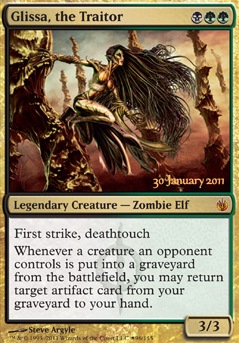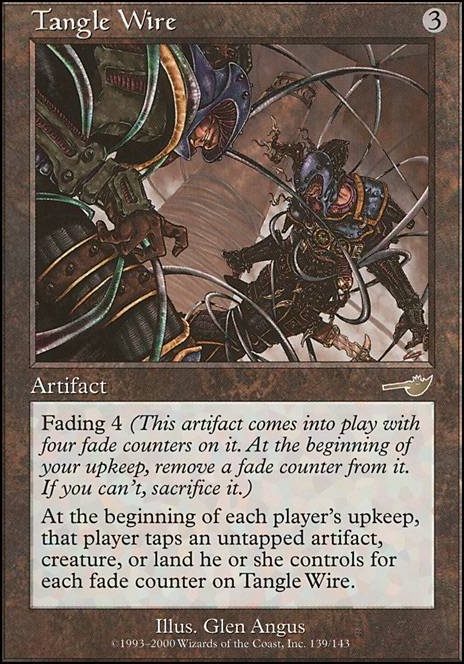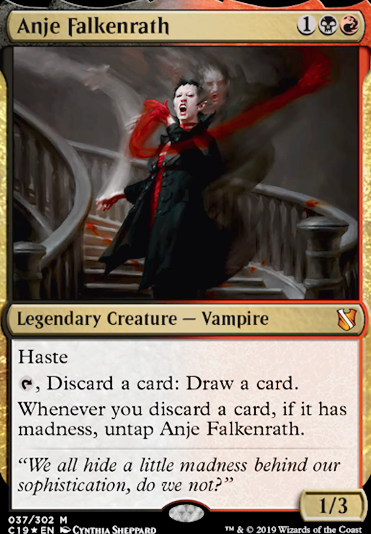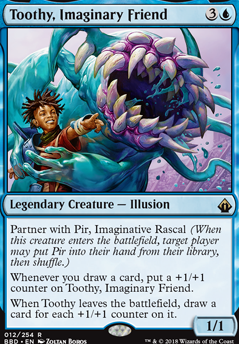Land (38)
- 1x Ancient Tomb
- 1x Barren Moor
- 1x Bayou
- 1x Bazaar of Baghdad
- 1x Blast Zone
- 1x Bojuka Bog
- 1x Cabal Coffers
- 1x Command Beacon
- 1x Command Tower
- 1x Dark Depths
- 1x Dust Bowl
- 1x Field of the Dead
-
1x
Forbidden Orchard

- 4x Forest
- 1x Gaea's Cradle
- 1x Llanowar Wastes
- 1x Maze of Ith
- 1x Misty Rainforest
- 1x Nurturing Peatland
- 1x Overgrown Tomb
- 1x Strip Mine
- 3x Swamp
-
1x
Tainted Wood

- 1x Thespian's Stage
- 1x Tranquil Thicket
- 1x Twilight Mire
- 1x Urborg, Tomb of Yawgmoth
- 1x Verdant Catacombs
- 1x Volrath's Stronghold
- 1x Windswept Heath
- 1x Wooded Foothills
- 1x Woodland Cemetery
- 1x Yavimaya Hollow
Instant (6)
Creature (25)
-
1x
Hangarback Walker

- 1x Walking Ballista
- 1x Deathrite Shaman
-
1x
Hex Parasite

- 1x Sylvan Safekeeper
- 1x Phyrexian Revoker
-
1x
Wall of Roots

-
1x
Eternal Witness

-
1x
Metalworker

- 1x Plaguecrafter
- 1x Sylvok Replica
-
1x
Wood Elves

- 1x Crypt Ghast
-
1x
Oracle of Mul Daya

-
1x
Solemn Simulacrum

- 1x Genesis
-
1x
Demon of Dark Schemes

-
1x
Duplicant

- 1x Noxious Gearhulk
-
1x
Wurmcoil Engine

- 1x Avenger of Zendikar
- 1x Myr Battlesphere
-
1x
Sheoldred, Whispering One

- 1x Craterhoof Behemoth
- 1x Emrakul, the Promised End
Sorcery (8)
Commander (1)
Artifact (15)
- 1x Mishra's Bauble
- 1x Chromatic Sphere
- 1x Chromatic Star
- 1x Executioner's Capsule
- 1x Expedition Map
- 1x Sensei's Divining Top
- 1x Skullclamp
- 1x Sol Ring
-
1x
Soul-Guide Lantern

- 1x Wayfarer's Bauble
-
1x
Lightning Greaves

-
1x
Crucible of Worlds

- 1x Oblivion Stone
- 1x Birthing Pod
-
1x
Nevinyrral's Disk

Enchantment (6)
- 1x Exploration
- 1x Survival of the Fittest
-
1x
Sylvan Library

- 1x Attrition
- 1x Pernicious Deed
-
1x
Defense of the Heart

Planeswalker (1)
Maybeboard
Artifact (7)
Sorcery (2)
Suggestions
Comments View Archive
Attention! Complete Comment Tutorial! This annoying message will go away once you do!
Important! Formatting tips — Comment Tutorial — markdown syntax
Please login to comment
| Top Ranked |
|
| Date added | 9 years |
| Last updated | 4 years |
| Legality | This deck is Commander / EDH legal. |
| Rarity (main - side) | 10 - 0 Mythic Rares 57 - 0 Rares 16 - 0 Uncommons 10 - 0 Commons |
| Cards | 100 |
| Avg. CMC | 3.03 |
| Tokens | Assassin 1/1 B w/ Player Killer, Energy Reserve, Marit Lage, Myr 1/1 C, Plant 0/1 G, Spirit 1/1 C, Thopter 1/1 C, Wurm 3/3 C w/ Deathtouch, Wurm 3/3 C w/ Lifelink, Zombie 2/2 B |
| Folders | Stefouch EDHs, Interesting Commander Decks, Interesting decks, immediate make, Intredasting, Golgari Deck Ideas, Planning to make, inspiration, Must Build, fun |
| Votes | |
| Ignored suggestions | |
| Shared with | |
| Based on | |
| Views |













